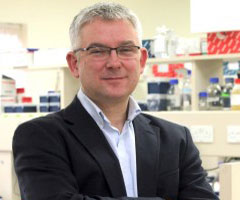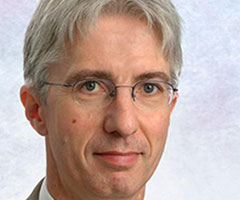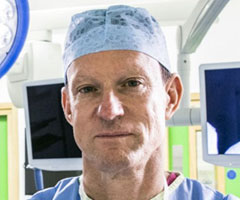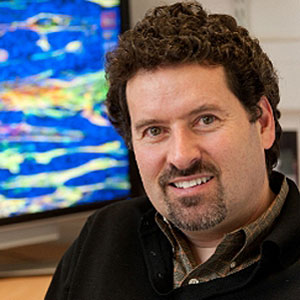Medulloblastoma research
Medulloblastoma is the most common high-grade brain tumour in children. Based on clinical and biological characteristics medulloblastomas are divided into four sub-types: WNT, SHH, Group 3 and Group 4.
The four sub-types are linked to very different outcomes and need different levels of treatment. The research we fund into medulloblastoma aims to understand more about the causes of the disease, as well as developing kinder and more effective treatments.
Current research projects
Here are the research projects we are currently funding that relate to understanding or treating medulloblastoma

Dr. Jessica Taylor
Identifying a specific subtype of brain tumour without surgery
Dr Jessica Taylor at the University of Cambridge is developing a novel strategy called ADCIPs to identify and treat WNT-medulloblastoma, a highly curable brain tumour in children, without the need for surgery.

Professor Steve Clifford
PNET5 trial: transforming treatments for childhood brain tumours
Medulloblastomas are the most common high grade brain tumours in children. The standard treatment for this tumour type is removing the tumour with surgery, followed with chemotherapy and radiotherapy.
However, these treatments are quite aggressive and cause long-term, life-altering disabilities. The PNET5 clinical trial aims to improve the quality of survival of these children by providing kinder and tailored treatments.

Dr Paul Northcott
Medulloblastoma Epigenome Regulation in Treatment (MERIT)
Previous research has shown that epigenetic changes contribute to treatment resistance in medulloblastomas. Epigenetic changes refer to changes in the structure of DNA that alter the way DNA is ‘read’ by the cell. The aim of this research programme, led by Dr Paul Northcott, is to identify the epigenetic changes occurring in Group 3 medulloblastomas in response to treatment.

Dr Laure Bihannic
Understanding the origins of medulloblastoma
To create effective preclinical tumour models, it is imperative to know the cells from which the tumours originate. While it is known which cells WNT and SHH medulloblastomas arise from, the cellular origins of Groups 3 and 4 remain unknown. The aim of this research project, led by Dr Laure Bihannic, is to understand which cells give rise to Groups 3 and 4 medulloblastomas and use this knowledge to create accurate preclinical models for these subgroups.

Professor Louis Chesler
New drug development for medulloblastoma
Professor Chesler is working with a team from Germany and the USA to study Group 3 medulloblastoma. The team will be analysing the genome in medulloblastoma tumour cells while also working on new ways to test drugs for this tumour type.
If successful, the research could, for the first time, reveal how these tumours are wired. This could mean that new drugs to treat this tumour type are delivered to the clinic within five years.

Professor Colin Kennedy
Quality of survival in a Europe-wide clinical trial
This funding supports the quality of survival aspects of the European clinical trial entitled SIOP-PNET5-MB. This trial is for children with medulloblastoma tumours that have been defined in the clinic as “standard risk”. The purpose of the trial is to assess whether treatment can be reduced so that these children experience less long term side effects, but still benefit from the anti-tumour activity of the protocol.

Professor Louis Chesler
Targeting SRC in childhood glioma
One of our ongoing grants identified a protein called SRC that may be driving group 4 medulloblastomas in children. This type of tumour has been notoriously difficult to study and to treat. This new research will delve into the role of SRC in starting and motivating tumour growth, and the team will be using sophisticated lab models to test a new drug to target it.

Dr Paul Northcott
Understanding the significance of medulloblastoma subtypes
Medulloblastomas are divided into the following sub-groups based on different clinical and biological characteristics: WNT, SHH, Group 3 and Group 4.
However, there are several clinical trials testing different treatment regimens for children with medulloblastomas that are either concluding or have recently concluded that were launched prior to the consensus of the above sub-groups. The outcomes of these trials cannot be interpreted without proper molecular annotations.
The aim of Dr Northcott and his team is to assign molecular subgroups to all patients who took part in two clinical trials conducted by the Children’s Oncology Group. This will allow the researchers to interpret treatment-related outcomes for each sub-group.

Mr Conor Mallucci
Solving the mystery behind Cerebellar Mutism Syndrome
Mr Mallucci will be carrying out a multi-centre study to investigate Cerebellar Mutism Syndrome (CMS), a.k.a. Posterior Fossa Syndrome, a serious and poorly understood late effect resulting from surgical complication. It is seen in up to 25% of children after removing tumours from the very back of the skull, known as the cerebellum.

Prof Simon Bailey
Professor Simon Bailey from Newcastle University is leading an international clinical trial to evaluate the advantages of different chemotherapy and radiotherapy strategies for high-risk medulloblastoma patients.

Prof. Marcel Kool
Growing model brains in the search for new treatments
Current child brain tumour research projects
Here are some other research projects we are currently funding that relate to understanding or treating childhood brain tumours, including medulloblastoma.

Dr Jan Schuemann
Extreme dose rate proton therapy
Previous studies have shown that delivering radiotherapy extremely rapidly can dramatically reduce side-effects. Radiation therapy that delivers the same dose of radiation in a much shorter period of time is called extreme dose radiation (EDR). EDR therapy has not been tested using proton beams, and that’s where this innovative research project comes in.
The research team, led by Dr Schuemann, will use pre-clinical models to test EDR proton therapy with the aim of establishing a treatment regimen that’s effective and well-tolerated by people. They’ll compare EDR to conventional radiation delivery and look for any differences in side-effects, specifically looking into the effects on cognition and motor control.

Professor Colin Watts
Tessa Jowell BRAIN MATRIX
The Tessa Jowell BRAIN-MATRIX is a first-of-its-kind study that will enable doctors to treat brain tumours with drugs that are more targeted than ever before. We are excited to be investing £2.8 million to set the study up, and to drive it into the future.
Although the trial is being led from the UK, we expect it to deliver global impact for brain cancer patients.

Professor Steve Clifford
INSTINCT
Our INSTINCT programme brings together experts from Newcastle University, the Institute of Cancer Research (ICR) and the UCL Institute for Child Health in London to research
high-risk childhood brain tumours, including DIPG.
The research programme on DIPG is being led by Dr Chris Jones at the Institute of Cancer Research. Dr Jones has extensive experience in understanding the genetic basis of these tumours and what is driving tumour growth and then developing new drugs that target the genes involved.
Past research projects:
PNET5 clinical trial: transforming treatments for childhood brain tumours (molecular testing)
Investigating tumour initiating events










